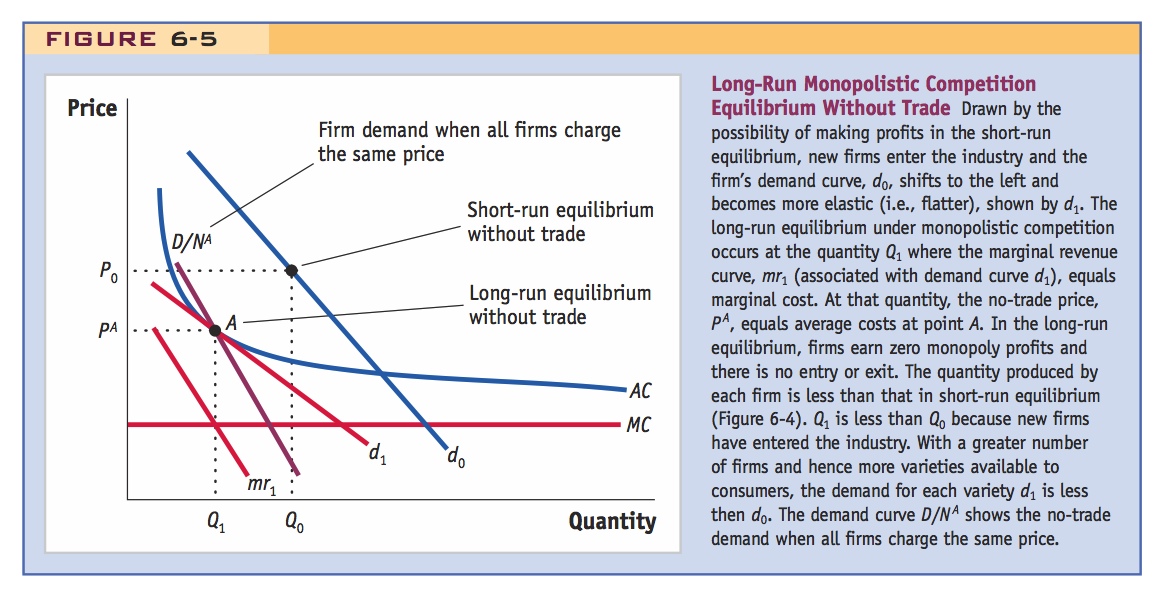
Long-Run Monopolistic Competition Equilibrium Without Trade Drawn by the possibility of making profits in the short-run equilibrium, new firms enter the industry and the firm’s demand curve, d0, shifts to the left and becomes more elastic (i.e., flatter), shown by d1. The long-run equilibrium under monopolistic competition occurs at the quantity Q1 where the marginal revenue curve, mr1 (associated with demand curve d1), equals marginal cost. At that quantity, the no-trade price, P A, equals average costs at point A. In the long-run equilibrium, firms earn zero monopoly profits and there is no entry or exit. The quantity produced by each firm is less than that in short-run equilibrium (Figure 6-4). Q1 is less than Q0 because new firms have entered the industry. With a greater number of firms and hence more varieties available to consumers, the demand for each variety d1 is less then d0. The demand curve D/N A shows the no-trade demand when all firms charge the same price.